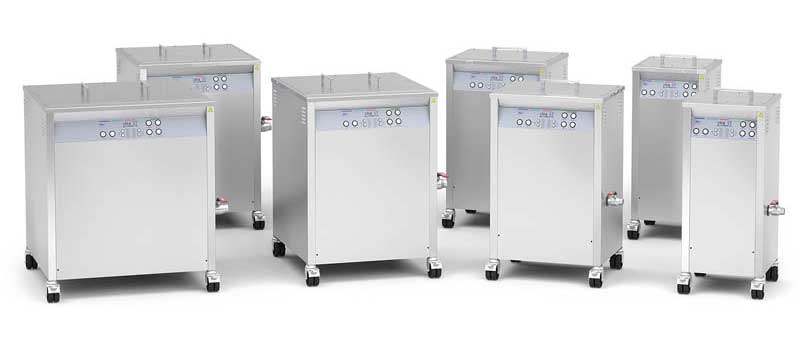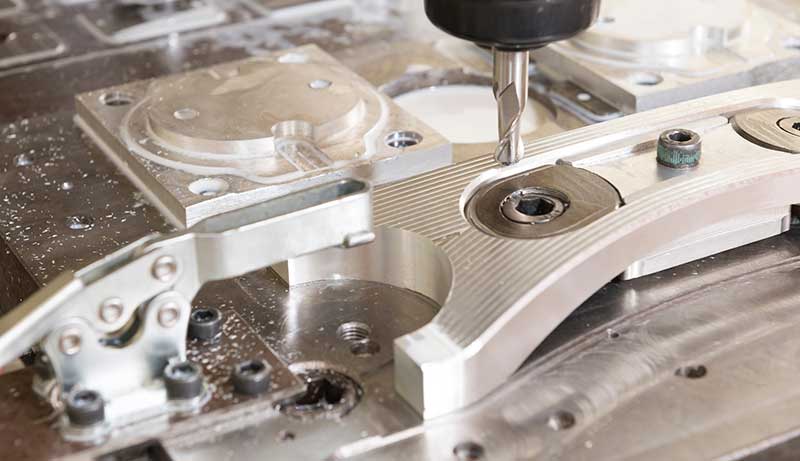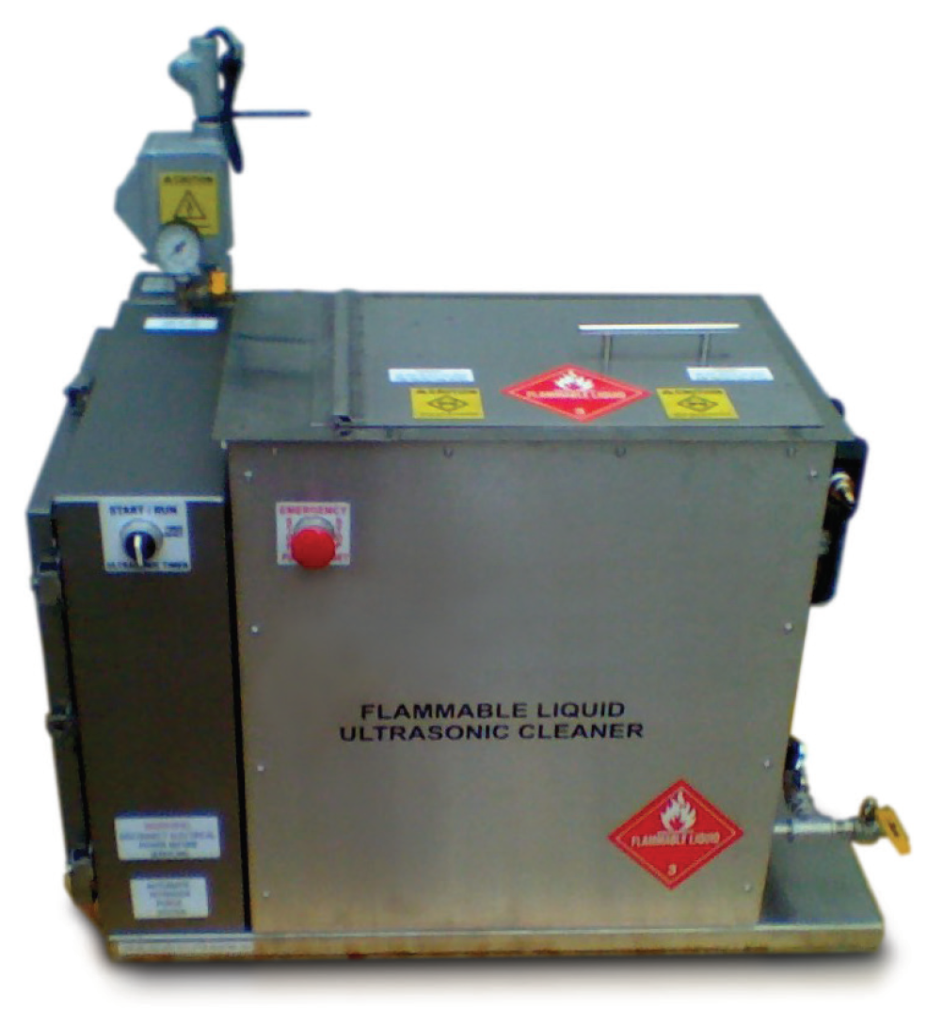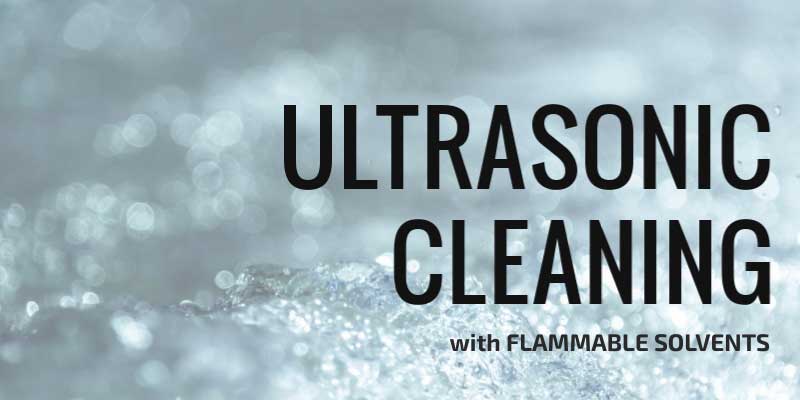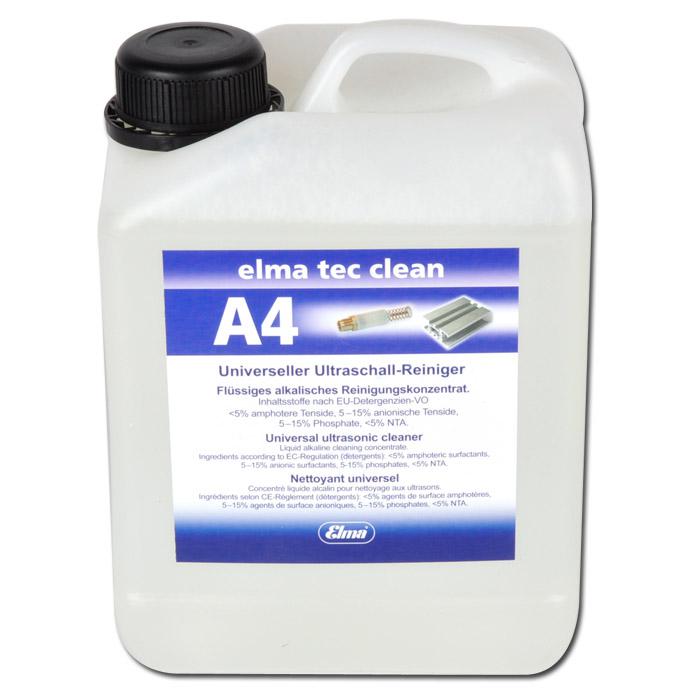Ultrasonic Cleaners
Selecting an Industrial Ultrasonic Cleaner
If you have tough cleaning jobs characterized by heavy, tenacious contaminants or run cleaning cycles over long periods of time, regardless of part size, you should consider an industrial ultrasonic cleaner. This post describes the various features and functions offered by industrial ultrasonic washers and how they contribute to achieving desired results.
Select Your Topic of Interest
What is an Industrial Ultrasonic Cleaner
Two Basic Features to Consider
Other Features
Typical Applications
What is an Industrial Ultrasonic Cleaner?
You might think an industrial ultrasonic washer must be “big” because they handle industrial products. Not necessarily so. Your industrial parts washer size (or cleaning solution capacity) is governed by the size of parts you are cleaning. Industrial ultrasonic cleaners are offered as benchtop and floor mounted models.
Another consideration to keep in mind is the duration of your cleaning cycles. ong-term cleaning cycles (i.e. operating … Read the rest
Efficiently Clean Machined Parts with Ultrasonic Cleaner
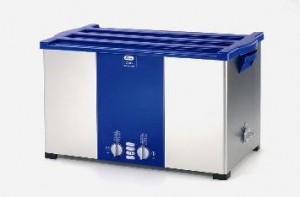
Cleaning finely machined parts with ultrasonic energy avoids damage by abrasive compounds and mechanical scrubbing to remove grinding dust, metal shavings, lubricants, cutting and coolant fluid residues. That’s why ultrasonic cleaners are widely used to prepare machined parts for final assembly or for further processing steps such as electroplating and powder coating.
Ultrasonic cleaning machined parts avoid surface damage while eliminating time-consuming soaking then scrubbing parts with potentially dangerous solvents.
Ultrasonic Energy, the Fast, Clean way to Clean Machined Parts
Ultrasonic cleaners, as noted below, are offered in sizes from benchtop to floor-mounted industrial units. They use biodegradable cleaning solution concentrates such as elma tec clean A4 universal degreaser to quickly and safely remove all forms of contaminants from finely finished machined parts.
Another cleaning … Read the rest
Ultrasonic Cleaners with Remote Generators
Industrial-scale ultrasonic cleaning involving flammable solvents with low flash points* requires special equipment as well as special procedures. The American Chemical Society publishes a table of common organic solvents that includes flash points. In terms of equipment specifications, you will need ultrasonic cleaners with remote generators to comply with NEC and NFPA as well as local codes to minimize dangers of fire or explosions.
Ultrasonic Cleaner Generators – What they Do
Benchtop ultrasonic cleaners and most floor-mounted industrial-sized units used with non-flammable aqueous cleaning chemicals have self-contained ultrasonic generators mounted in the unit casing along with the ultrasonic bath tank, transducers, control panel and, if so equipped, heaters.
These generators power the ultrasonic transducers that create billions of microscopic bubbles that implode on contact with items being cleaned to blast and carry away contaminants. For more on this see our post on how ultrasonic … Read the rest
Using Acetone Solvent as an Ultrasonic Bath
Acetone, a solvent and thinner available in paint and hardware stores, carries on its container a warning that it is extremely flammable and quickly evaporates. These two characteristics are always important to users but particularly important when acetone solvent is used as a degreaser in ultrasonic bath for residue-free removal of contaminants. This post provides information on the safe use of acetone solvent as an ultrasonic bath.
But first, some background.
Why Caution is Critical with Acetone
Acetone and similar solvents such as toluene and IPA are characterized by relatively low flash points.
A flash point is the temperature at which a particular organic compound such as an acetone cleaner gives off sufficient vapor to ignite in air when given an ignition source. And as noted above, acetone evaporates quickly.
The American Chemical Society publishes a table of common organic solvents that includes flash points. Acetone’s flash point … Read the rest
Ultrasonic Cleaning Tanks: What You Should Know
While a variety of ultrasonic cleaners are the market, one component they have in common is the ultrasonic cleaning tank where cleaning action takes place. Whether you select a basic model ultrasonic cleaner, an advanced benchtop or a floor-mounted industrial-scale model, long-term reliability depends on the industrial ultrasonic cleaning tank and how you use and care for this essential component.
Ultrasonic Cleaning Tank Size
Cleaning tank size – which also governs the cleaning solution capacity – must be sufficient to accommodate whatever you are cleaning in such a way that parts are fully immersed in the ultrasonic cleaning solution.
Although this may seem a no-brainer, remember that parts being cleaned must not be in contact with each other or the tank itself. Otherwise, parts can be damaged, and perhaps more seriously, the tank itself can be damaged due to ultrasonic vibration.
That is why most cleaning is accomplished in … Read the rest
Selecting a Heated Ultrasonic Cleaner
Just as soapy hot water is better than cold for cleaning greasy dishes, pots and pans (and even you!), a heated ultrasonic cleaner solution often “works best” solving tough cleaning challenges. That’s why you should select a heated ultrasonic cleaner to remove deposits of heavy grease, burned on carbon deposits and grime from used engine parts, cutting oils from newly machined components, residues in plastic injection molds, and similarly difficult cleaning challenges.
The Role of a Heated Ultrasonic Cleaner
If you are new to the process of ultrasonic cleaning, we invite you to review our post on how ultrasonic cleaners work. Otherwise, please continue reading about selecting a heated ultrasonic cleaner.
Fast, safe and efficient ultrasonic cleaning cycles call for a judicious blend these variables:
- cleaning solution chemicals
- cleaning solution temperature
- cleaning cycle time
- ultrasonic frequency
Cleaning solution chemicals are selected based on the project … Read the rest
Two Practical Solutions to Clean Lab Sieves
Cleaning fine mesh particle analysis lab sieves becomes more difficult as mesh size decreases, making it more likely that particles become trapped in fine sieve openings. Manual cleaning test sieves has drawbacks including potential damage to the mesh and failure to achieve 100% particle removal. Here are two practical solutions to clean lab sieves as well as perform other important functions in food and pharmaceutical research facilities.
Lab Sieve Cleaning Solution No. 1
One way to solve the problem is by combining the 7.5-gallon Elmasonic EP300H ultrasonic cleaner with the Elma SRH 4/200 sieve rotation holder.
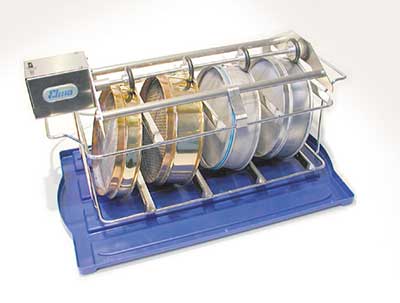
Ultrasonic cavitation produced by the Elmasonic EP300 H creates billions of minute vacuum bubbles. These implode vigorously against the surfaces of objects being cleaned to quickly and safely dislodge contaminants.
The unit operates at 37 kHz ultrasonic frequency. Features include a heater (30⁰ – 80⁰C) and a timer (1 … Read the rest
Ultrasonic PCB Cleaners for New and Reconditioned Boards
Removing soldering flux and residues from new PCBs and dirt when reconditioning PCBs by using an ultrasonic PCB cleaner is faster and more gentle than soaking and scrubbing with sprays and solvents. Manual PCB cleaning is time consuming, can damage delicate PCB assemblies and can be environmentally unfriendly. An ultrasonic PCB cleaner provides your best assurance that contaminants have been completely removed from new or reconditioned board configurations.
How an Ultrasonic PCB Cleaner Works
If you are familiar with ultrasonic cleaning proceed to the next section.
Ultrasonic cleaners come in a variety of sizes and capacities ranging from benchtop to floor mounted industrial units. Regardless of size, ultrasonic cleaners work in the same way.
A tank sized to accommodate objects being cleaned contains a biodegradable cleaning solution formulated for the task at hand.
Controls range from a simple on-off switch to more sophisticated timers, heaters and other features such as … Read the rest
Ultrasonic Cleaning Once-Fired Brass
A Tovatech Case Study
A recent report by IBISWorld states that the U.S. Shooting Range Industry market is estimated at $4 billion and encompasses more than 11,000 businesses. Many shooting enthusiasts, whether pistol or rifle, save on the cost of purchasing new ammo by cleaning and reloading spent cartridges, called once-fired brass. Here we describe how a professional employs an ultrasonic cleaner to restore some 250 pistol casings a week and 200 rifle casings a month.
A Case Study on Cleaning Once-Fired Brass
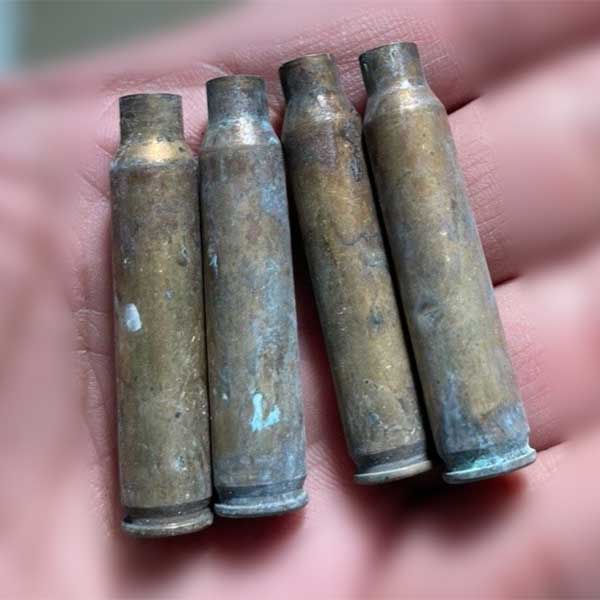
Seattle resident Subhro Kar is a Product Security Engineer for Red Hat Software and volunteers as a search and rescue pilot. Hobbies include photography, hunting and participation in precision shooting competitions. He shares with Tovatech his recommendations on employing ultrasonic energy to clean once-fired brass.
Tovatech: What led you to investigate then adopt cleaning and reloading once-fired brass?
Mr. Kar: I do … Read the rest
More on Selecting Ultrasonic Cleaning Solutions
As we suggested in our blog post How to Select Ultrasonic Cleaner Solutions* cleaning solution chemistry has an important bearing on the success of operating an ultrasonic cleaner. Here we will look at some other considerations to keep in mind.
For example, the choice of a cleaning chemistry depends not only on the surface material and contamination, but also on the use and level of cleanliness required after cleaning. Here are but two of many examples we could share:
For precision cleaning prior to coating operations you need a cleaner that easily rinses residue-free. This helps ensure that coatings such as powder, anodizing, chromium plating or paint will fully adhere to the surface. For applications such as these we strongly suggest EC 260 d&s neutral foam-inhibited concentrate.
There are less-demanding levels of cleanliness for other applications. If your shop cleans, repairs or reconditions used equipment made of materials such … Read the rest
